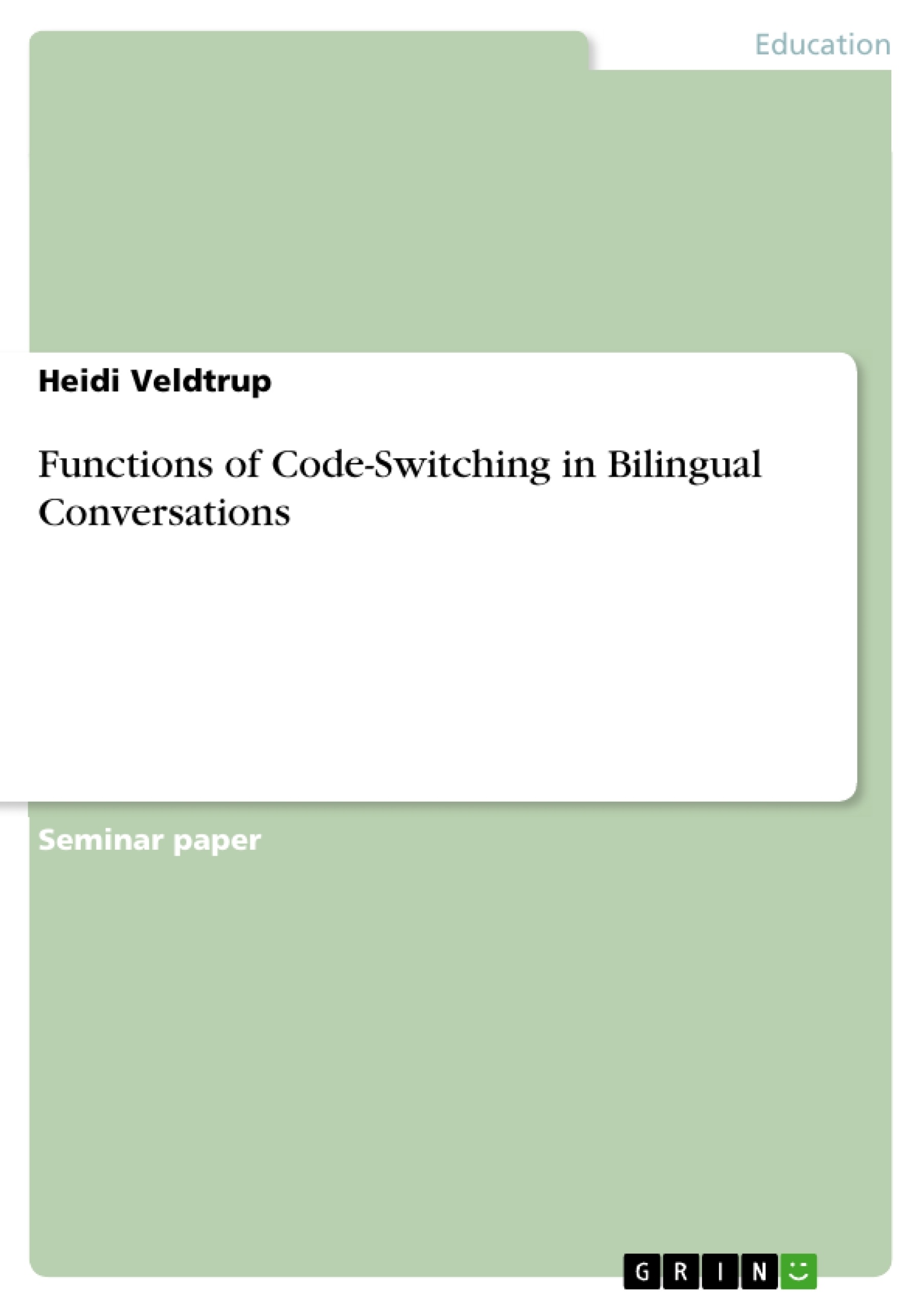Diese Hausarbeit analysiert beispielhaft eine Konversation von drei Menschen, die sich bilingual unterhalten (deutsch-englisch). Dabei wird näher auf die Funktionen eines Code-switches (d.h. der Wechsel der Sprachen innerhalb einer Konversation) eingegangen. Die Analyse erfolgte mithilfe einer transkribierten Tonaufnahme und eines Fragebogens.
This paper takes a closer look at the functions of code-switching during a bilingual conversation with three participants. This conversation was recorded, transcribed and then used for this short analysis.
Inhaltsverzeichnis (Table of Contents)
- Introduction
- Data Description
- Participants
- Setting and Instructions
- Questionnaire
- Choosing a Base Language
- Code-switching versus Borrowing
- Different Reasons for Code-switching in Bilingual Interaction
- Expression of Certain Notions or Concepts
- Substitution of a Linguistic Need
- Quotations
- Communicative or Social Strategy
- Other Influencing Factors
- Code-switches without Obvious Reasons
- Conclusion
- Bibliography
- Appendices
- Transcription
- Questionnaires
Zielsetzung und Themenschwerpunkte (Objectives and Key Themes)
The main objective of this work is to explore the phenomenon of code-switching in bilingual conversations. Specifically, it aims to analyze the different reasons why bilingual speakers choose to switch between languages within a single conversation. The study focuses on real-life conversations among bilingual individuals, analyzing patterns and motivations behind their code-switching practices.
- Functions of Code-switching
- Factors Influencing Language Choice
- Impact of Social Context on Code-switching
- Linguistic and Social Motivations for Code-switching
- The Role of Bilingualism in Everyday Communication
Zusammenfassung der Kapitel (Chapter Summaries)
- Introduction: This chapter introduces the research topic of code-switching and its significance in the context of bilingual communication. It explores the widespread nature of bilingualism and the increasing recognition of its importance in understanding human language use. Different definitions of bilingualism are presented, emphasizing the dynamic nature of language use in multilingual societies.
- Data Description: This chapter provides a detailed description of the data used in the study. It outlines the participants, the setting of the conversations, and the methodology used to collect the data. The chapter also introduces the questionnaires used to gather information about the participants' linguistic backgrounds and experiences.
- Choosing a Base Language: This chapter delves into the process of selecting a base language in bilingual conversations. It examines the factors that influence the choice of one language over another and the role of social context in shaping language use.
- Code-switching versus Borrowing: This chapter discusses the difference between code-switching and borrowing. It explores the nuances of these terms and their implications for understanding the complexities of language mixing in bilingual communication.
- Different Reasons for Code-switching in Bilingual Interaction: This chapter examines the various reasons why bilingual speakers engage in code-switching. It explores the different motivations, such as expressing specific notions, fulfilling linguistic needs, quoting others, employing communicative or social strategies, and other influencing factors.
Schlüsselwörter (Keywords)
The main keywords and focus topics of this text include code-switching, bilingualism, multilingualism, language mixing, social context, linguistic motivations, communicative strategies, and the analysis of real-life conversations. The research explores the functions of code-switching in bilingual interaction, examining the factors that contribute to language choice and the social and linguistic implications of this phenomenon.
- Arbeit zitieren
- Heidi Veldtrup (Autor:in), 2010, Functions of Code-Switching in Bilingual Conversations, München, GRIN Verlag, https://www.grin.com/document/211297



